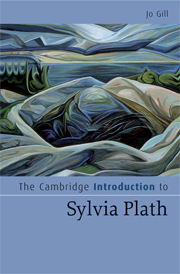Book contents
5 - The Bell Jar and Johnny Panic and the Bible of Dreams
Published online by Cambridge University Press: 05 June 2012
Summary
The Bell Jar
For some early critics, Sylvia Plath's 1963 novel, The Bell Jar, was best thought of as ‘a poet's notebook’ or as ‘a poet's novel, a casebook almost in stanzas’. More recent commentators have seen it as more than mere apprentice work for the later poetry. Elizabeth Wurtzel commends its ‘remarkable achievement’ and describes it as ‘very funny, smartly detached, and often nasty in a voice too honest to be unsympathetic’, while Robin Peel notes its ‘wonderfully mordant humour’.
The difficulty of assessing the literary merit of The Bell Jar is compounded by its complicated publishing history. It was first published in England by Heinemann on 14 January 1963 under the pseudonym that Plath had chosen, Victoria Lucas. Diane Middlebrook explains that the decision to use a pseudonym was partly influenced by the apparently autobiographical nature of some of the material in the book; the false name afforded a degree of disguise and protection. But she also speculates that it shows Plath's intention to establish an entirely separate – potentially more commercially successful – authorial persona, one that would appeal to a popular audience and not be confused with the persona behind the other, more highly valued, poetic work. According to Jacqueline Rose, the task for Plath was to ‘engage in popular writing without detriment to – without violating – the purity of her art’.
- Type
- Chapter
- Information
- The Cambridge Introduction to Sylvia Plath , pp. 73 - 92Publisher: Cambridge University PressPrint publication year: 2008



